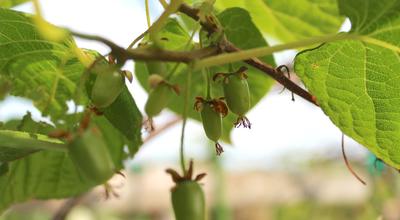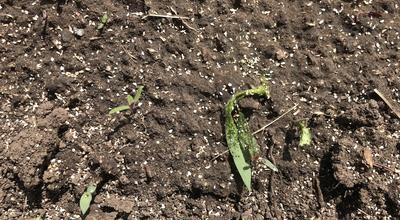An enduring quest for new fruit crops
Did you know that apples as we know them are not native to North America? The apples most people enjoy in the United States are in fact introductions or progeny of plants from European cultivation. However, they have been grown and cultivated here so long that they are as American as, well, apple pie.
The University of Minnesota has a long history of developing new fruits for the cold northern climate. In the mid 1800’s anyone would have been hard pressed to find an apple tree growing anywhere in the area. (A crabapple species, Malus ioensis, is native to the region, but the fruit is small and bitter and barely edible.) The cold winters were too harsh for most of the European stock brought to Minnesota. However, through perseverance, apples were developed that would survive and even thrive in the cold north. This was the beginning of change in both the horticulture industry and the landscape of the North.
Though dessert apples are pretty well naturalized in North America, they are an introduced crop from Europe. In fact, many of the fruits we enjoy are introductions to the North American landscape including pear, cherries, plums, and citrus just to name a few! If these fruits are all introductions that are now widely planted, are they also considered invasive?
Considerations when introducing a new fruit crop
The horticulture industry has historically been responsible for introducing a number of invasive plants with evidence that 50% of nonnative species were deliberate introductions (Mack and Erneberg, 2002). Additionally, Drew et al. point out that the qualities of many horticultural plants increase their possible invasiveness (2010). Traits like drought tolerance, long flowering time, low maintenance, and wide adaptability improve plant performance and increase possible risk (Anderson et al., 2006). With all these factors to consider, the horticulture industry and plant breeders working on new crops are all the more vigilant for invasive potential.
Most programs researching new crops have systems built in to evaluate invasiveness. Our efforts for kiwiberry research include vineyard management and observations of land surrounding the research plots. Check out ‘Exploring the invasiveness potential of kiwiberry’ for a more detailed list of our management practices. So far kiwiberries have been grown in Minnesota for over 30 years with no signs of escaped plants around the research plots. However, in order to continue responsibly studying kiwiberry as a new crop, we go beyond typical management practices and examine other traits that might allow plant escape.
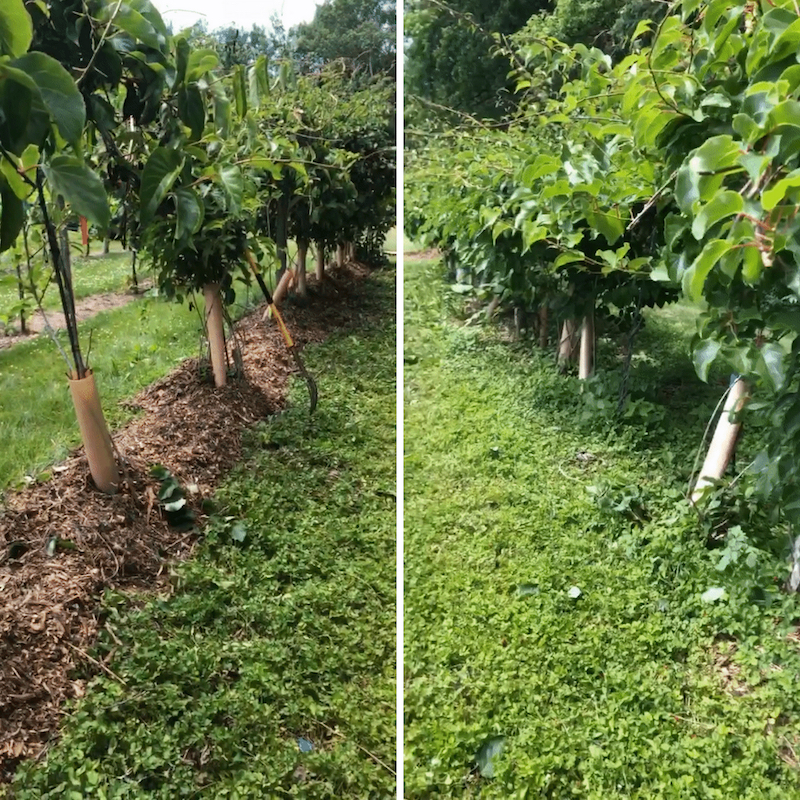
Studying seed germination as a factor of invasiveness
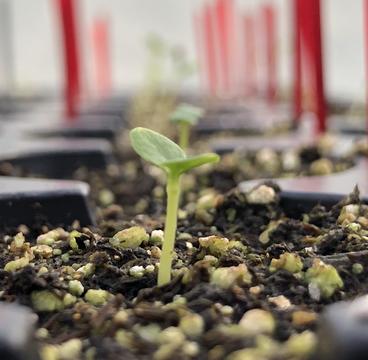
A study from New Zealand has shown that some birds eat kiwifruit and disperse seeds (Logan and Xu, 2006). If seeds were dispersed by birds or small mammals, we wanted to have an idea on how many of those might germinate in the wild under ideal circumstances. We conducted a germination experiment on a number of seeds from ten currently available plants on the market grown in our collection.
We collected seeds from fruit of two kiwiberry species, Actinidia kolomikta and A. arguta, and washed them to remove the pulp. Then we put the seeds on damp petri plates in a cooler set to 40F to stratify for four weeks. Once seeds had stratified, we divided them into two treatment groups. Group 1 was placed directly into germination media and Group 2 was treated with gibberellic acid (GA) and then placed into germination media. GA is a plant hormone that can help promote seed germination. In some instances, it reduces the need for stratification (chilling) in small doses. In this experiment it helps us estimate the maximum potential germination. Then we placed the seedling trays in the greenhouse with fluctuating day/night temperature of 16 hours at 75F and 8 hours at 55F.
Based on this quick germination experiment, we observed:
- Seeds sown directly after chilling have average germination of 11.2% for A. kolomikta and 35.5% for A. arguta.
- Seeds treated with GA show increased germination rates up to 58.4% for A. kolomikta and 79.2% for A. arguta.
- There were were statistically significant differences among treatments and species.
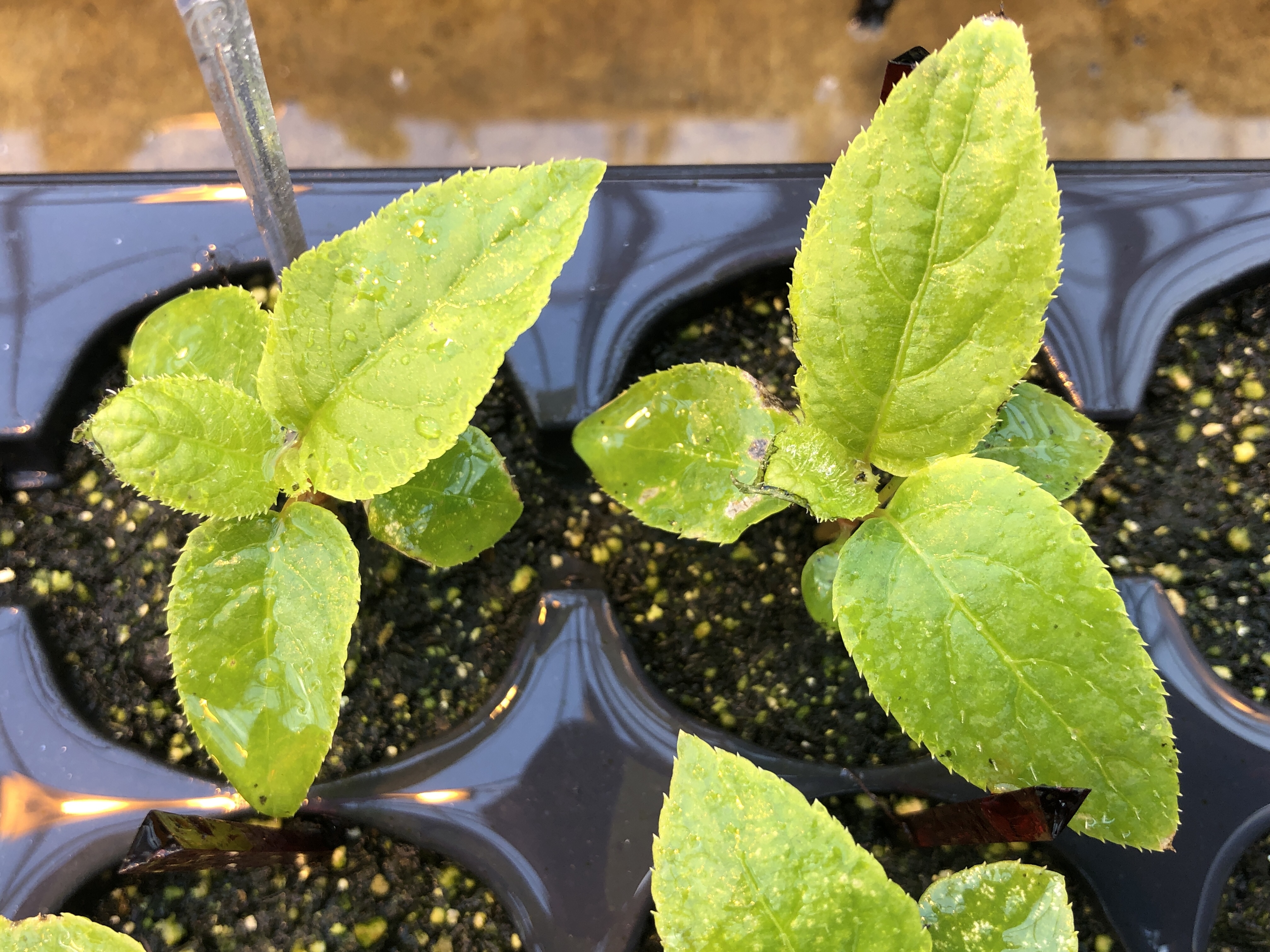
Though this is only a preliminary glimpse into germination and requires further investigation, it shows that there is variation for seed germination between the species under the given conditions. However, we continue to be vigilant by monitoring surrounding areas for escapes and managing plots with the aim of reducing opportunities for escape. With this insight into a tiny piece of this new crop puzzle, we can continue to improve cultivation and management recommendations while expanding the diversity of new fruit crops.
References
Anderson, N.O., S. M. Galatowitsch, and N. Gomez. 2006. Selection strategies to reduce invasive potential in introduced plants. Euphytica. 148:203–206.
Drew, J., N. Anderson, and D. Andow. 2010. Conundrums of a complex vector for invasive species control: a detailed examination of the horticultural industry. Bio. Invasions. 12: 2837-2851.
Logan, D. P. and X. Xu. 2006. Germination of kiwifruit, Actinidia chinensis, after passage through Silvereyes, Zosterops lateralis. New Zealand J. Eco. 407-411.
Mack, R.N. and M. Erneberg. 2002. The United States naturalized flora: largely the product of deliberate introductions. Ann. Mo. Bot. Gard. 89:176–189.
Acknowledgements
This research is funded by the Minnesota Department of Agriculture and made possible through the University of Minnesota Department of Horticultural Science.
Thank you to the following people for their contributions to this article:
- Dr. James Luby, Professor, Department of Horticultural Science, University of Minnesota
- Dr. Robert Guthrie, Volunteer Actinidia curator, University of Minnesota
- Emily Tepe, Research associate, Department of Horticultural Science, University of Minnesota
- Carrie Brevitz, Undergraduate researcher, University of Minnesota
